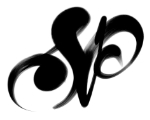
Portfolio
since 1983
The journey from traditional to digital to artificial intelligence.
Till date I remain a learner. I also teach. That’s my passion.
Plein Air Landscapes
Travelling and experiencing interesting places in paintings in live environments.
View fullsize
![Mangaluru tiled home]()

Mangaluru tiled home
View fullsize
![Hosabettu Beach]()

Hosabettu Beach
View fullsize
![Kalva Home perched on edge of a mountain]()

Kalva Home perched on edge of a mountain
View fullsize
![Haji Ali Dargah in the Arabian Sea]()

Haji Ali Dargah in the Arabian Sea
View fullsize
![Nashik Ganga Ghat]()

Nashik Ganga Ghat
View fullsize
![Village in Vasai]()

Village in Vasai
View fullsize
![Dynamic Perspective - Mangalore]()

Dynamic Perspective - Mangalore
View fullsize
![Ellora Monolith]()

Ellora Monolith
View fullsize
![Powai lake]()

Powai lake
View fullsize
![Calangute Beach Goa]()

Calangute Beach Goa
View fullsize
![The Thirst quencher tank]()

The Thirst quencher tank
ON THE SPOT SKETCHES
Rapid sketching of real people and places
ON THE SPOT PORTRAITS
Capturing people and personalities
IPAD ART
Magic of various apps used with Apple pencil
RANGOLI
Art of painting on floor with powder colours









































































